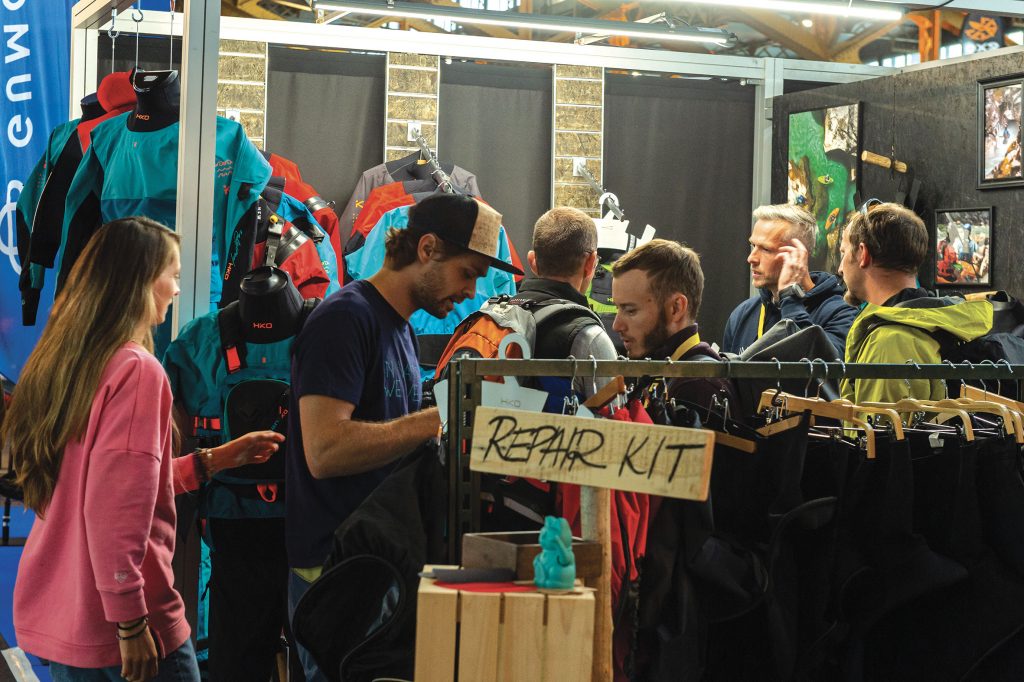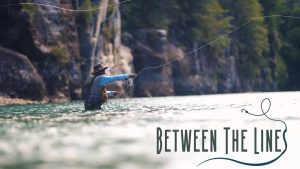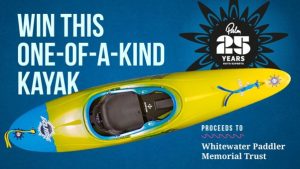How simplified products are helping paddlesports work toward a circular economy.
A surprising trend is on the horizon: stripped-back products focusing on versatility and durability. Is this the first step to reaching a circular economy?

Being a leader in the paddlesport industry often comes with a dark side: The more we grow, the more waste we generate, and the bigger our environmental impact becomes. It is a reality many are working to change not as an afterthought but from the get-go. “We need to start taking ownership not only for cleaning up the mess but for reducing the mess in the first place,” advocates Soul Waterman owner and designer Corran Addison.
At a conference on the Paddlesports Footprint at the Paddle Sports Show in Lyon this fall, environmental consultant Henri Bourgeois Costa spoke of an imagined future with a circular economy where brands took full responsibility for the life of their products, from the materials used in their manufacture to what their end of life looks like and how a product is disposed of. Drawing on the example of Technica, who recently started an initiative to recycle or repurpose the many (17+) materials found in most ski boots, Costa reminded us that shifting the standards of an industry can start with one push.
“The key now is to design products so that they can be deconstructed and recycled at the end of their usable life.”
Durable and versatile products have long been a priority in paddlesports, from apparel and accessories to kayaks and paddleboards. As we refine and reduce our long-term environmental footprint, we expect to see more companies develop products with design innovations focused on durability, recyclability, reparability, and need. It seems simple, but thoughtful design provides a crucial foundation for avoiding products that spend more time in a landfill than on the water.
Peak Paddlesport founder and designer Pete Astles sees product design, including the materials used, as critical. While innovations in the past have focused on using and incorporating recycled materials, “The key now is to design products so that they can be deconstructed and recycled at the end of their usable life. We must all push our suppliers for… components that can be reused, repurposed, or recycled at the end of the product’s life.”
Unless products can be separated and compacted, the costs and impact of shipping products for recycling are prohibitive and counterproductive. As Costa’s Technica example highlights, separating products into different materials and repurposing them takes thought and effort. There also needs to be a strategy to develop infrastructure and consumer buy-in.
“Ideally, some industry-wide cooperation is required on these items along with consideration of how this can be achieved more easily during the design stage of any product,” points out Palm Equipment’s Paul Robertson. Astles agrees, advocating for the infrastructure provided “through clubs, dealers, and our own businesses so that our products can be easily returned for recycling and repairs.”
Another solution is partnering with organizations such as TerraCycle, which provides free recycling solutions for typically hard-to-recycle waste and maintains large-scale recycling programs in several countries. One program they currently offer in partnership with surf brand RipCurl collects and recycles old wetsuits, while The TerraCycle Global Foundation works to remove plastic waste from waterways.
“Every environmental gain is also a gain for our company, especially regarding the recycling of materials”
While it would be incredible if everything could be made with renewable or recycled materials, they don’t always provide the durability, longevity, or safety required by paddlesports. For Jochen Lettmann of Lettmann Kayaks, downcycling materials is important, but the best strategy is to encourage the use of products as long as it is safe. Lettmann, whose boats and paddles can last decades, promises customers, “We will do our best to repair your boat or paddle as long as it is possible.”
Agrees Matyas Hilgert of Hiko Sport, “Repairability is another way of very effectively extending product life span. Yes, it is not sexy because the word “repair” signals damage, but if Patagonia made the program successful so should we.” Hiko has begun small steps towards this goal, including a repair kit with their dry gear and working to educate customers on the need to repair rather than replace.
Being fully responsible for the products we create requires being honest about the need for new products and educating customers to think the same way, even if it means fewer sales in the short term. It requires choosing materials that will last as long as possible with as minimal an environmental impact as possible. It requires getting creative. There is no shortage of opportunities for continued innovation as we work towards this goal.
“Every environmental gain is also a gain for our company, especially regarding the recycling of materials,” says Tahe Outdoors in a 2022 interview with Boardsport Source. “The ultimate goal would be to be able to recycle all our boards at the end of their lives, which should be at least ten or twenty years.”
Whether through longer-lasting products or products designed to be repaired and recycled, the less waste we generate, the better it is for our world. And that is better for paddlesports.




